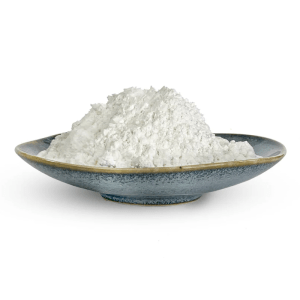
# Starch Sugar Production and Applications
## Introduction to Starch Sugar
Starch sugar, also known as glucose syrup or corn syrup, is a sweetener derived from starch through enzymatic or acid hydrolysis. This versatile ingredient plays a crucial role in various food and industrial applications due to its functional properties and cost-effectiveness.
## Production Process of Starch Sugar
### 1. Raw Material Preparation
The production of starch sugar begins with the selection of starch-rich raw materials. Common sources include:
– Corn
– Wheat
– Potatoes
– Cassava
– Rice
### 2. Starch Liquefaction
The starch undergoes liquefaction, where it’s mixed with water and treated with alpha-amylase enzymes at high temperatures (typically 90-110°C). This process breaks down the starch into shorter dextrin chains.
### 3. Saccharification
Keyword: Starch Sugar
During saccharification, the liquefied starch is cooled and treated with glucoamylase enzymes. This further breaks down the dextrins into simpler sugars, primarily glucose.
### 4. Refining and Purification
The resulting sugar solution undergoes several purification steps:
– Filtration to remove insoluble particles
– Carbon treatment for decolorization
– Ion exchange for demineralization
– Evaporation to concentrate the syrup
### 5. Optional Conversion Processes
Depending on the desired end product, additional processing may include:
– Isomerization to produce high-fructose corn syrup (HFCS)
– Hydrogenation to create sugar alcohols
– Fermentation for bioethanol production
## Types of Starch Sugar Products
The industry produces various starch sugar products with different compositions and properties:
Product | DE Value | Main Components
Glucose Syrup | 20-50 | Maltose, glucose, higher saccharides
Maltodextrin | <20 | Short-chain glucose polymers
High Maltose Syrup | 35-50 | Predominantly maltose
High Fructose Corn Syrup | 42-90 | Fructose and glucose
## Applications of Starch Sugar
### Food Industry Applications
Starch sugars serve multiple functions in food production:
– Sweetening agent in beverages, confectionery, and baked goods
– Humectant to retain moisture in products
– Fermentable substrate in brewing and baking
– Texture modifier in ice cream and frozen desserts
– Browning agent in baked goods
### Pharmaceutical Applications
In the pharmaceutical industry, starch sugars are used as:
– Excipients in tablet formulations
– Sweeteners in liquid medications
– Energy source in intravenous solutions
### Industrial Applications
Beyond food and pharmaceuticals, starch sugars find use in:
– Fermentation substrate for bioethanol production
– Raw material for organic acid production
– Component in adhesives and binding agents
– Feedstock for various chemical processes
## Advantages of Starch Sugar
Starch sugars offer several benefits over other sweeteners:
– Cost-effective production from abundant starch sources
– Consistent quality and purity
– Customizable sweetness and functional properties
– Excellent solubility and stability
– Versatility in various applications
## Future Trends in Starch Sugar Industry
The starch sugar industry continues to evolve with:
– Development of specialized enzyme systems for targeted sugar profiles
– Increased demand for clean-label and non-GMO products
– Growth in bio-based chemical production
– Advancements in sustainable production methods
– Expansion into new application areas
As consumer preferences and industrial needs change, starch sugar producers continue to innovate, ensuring this versatile ingredient remains a vital component in numerous industries worldwide.